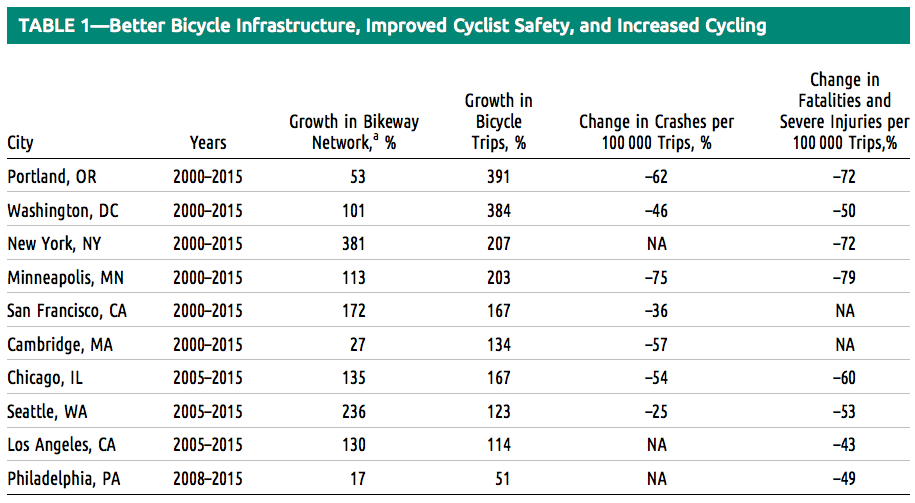- Our current streets and proposed street designs are hazardous for current users. Cambridge has seen three people killed while riding bikes over the past 2 years, along with numerous serious injuries.
- Protected bike lanes save lives and prevent serious injury, as documented in a recent Harvard School of Public Health study and a commentary in the American Journal of Public Health.
- Cambridge could be liable for failing to redesign streets with a history of crashes, as recently decided in New York City and California.
- Over three thousand people signed a petition asking for protected bike lanes on major Cambridge roads, and the numbers of people cycling in Cambridge is increasing rapidly.
- “I don’t want to die, and you don’t want to kill me.” Current road conditions in Cambridge encourage “wildness” among people driving and cycling that is dangerous and stressful.
- Cycling is an affordable, fun, healthy, and efficient method to get around Cambridge, which is compact and flat. Building a protected bicycle network creates transportation equity by making cycling a safe option for everyone.
- Hundreds of Cambridge teens are bicycling to school and after school activities and 25% of them report having been in a crash involving a vehicle.
- Cambridge has officially adopted ordinances and policies that commit the city to reducing vehicle trips and increasing other modes of travel, including Vision Zero, the Vehicle Trip Reduction Ordinance, the Growth Policy Document, and the Climate Protection Plan.
- The Cambridge Bicycle Plan maps out a vision for a street network that can provide safe passage for riders ages 8-80. Many other cities are installing miles of protected bike lanes and we can learn from their successes.
- Improved infrastructure for people riding bikes, walking, and taking transit often also improves flow of car traffic, decreases stress on all road users, and increases property values. Retail performance is typically not affected or is improved when on-street parking is replaced by protected bicycle lanes, which bring many more customers to the street.
- “Streets have been the same way for so long that people don’t really understand what’s possible.” Vision and leadership can significantly improve safety and quality of life in Cambridge.
- Cambridge has seen only a modest increase in bicycle infrastructure from 2000 to 2015 compared with other cities, according to data from 2000-2015 published in American Journal of Public Health (Dec. 2016). Clearly more progress is needed. For example while seven US cities increased bicycle networks by more than 100% since 2000, Cambridge — with only 27% growth – was second from the lowest.

Pucher and Buehler, American Journal of Public Health, Dec 2016

